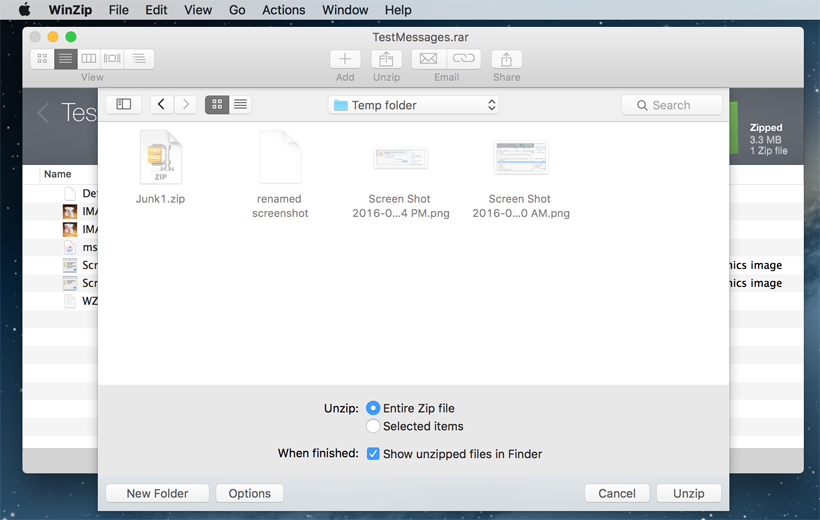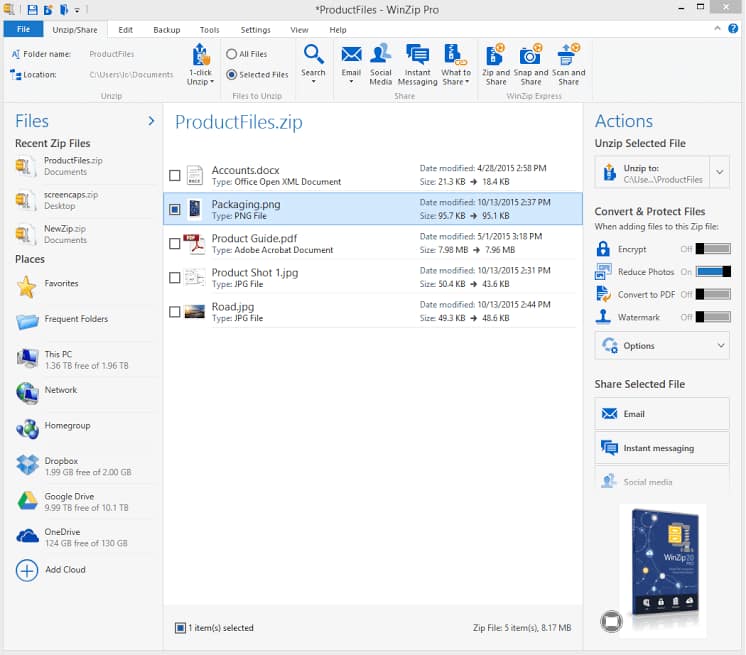

Depending on the size of your file or folder, it may take some time to finish the compression step. From this menu, select “Compress ‘'” in order to compress your file. To open the compression menu, right-click on the file or folder inside Finder or on your desktop.
#Mac 7z unzip command archive
No matter whether you are compressing a single file or a folder, the compression system with Archive Utility works the same.
#Mac 7z unzip command full
Both individual files and folders full of files can be zipped, though if you are sending a large number of individual files, you’ll want to place them into a single folder in order to compress. So no matter which version of macOS you are running, it’s easy to gain access to and use this tool.įirst, find the file or folder you want to zip.

The tool, Archive Utility, has been around since MacOS X 10.3, making it widely available on every Mac sold over the past decade.

That said, thanks to cloud-based services that have far higher file size limits than those available from email providers in the 2000s, it’s easier than ever to send and upload your work without having to compress it. This will allow the service you’re using to easily send the file over the web, without having to worry about your recipient not being able to access the file. So, when should and shouldn’t you zip a file? Typically, if you are trying to send someone a file over the internet, through email or other means, and the file is too large to upload to the server, you will want to make sure you have compressed the file down in size. Though modern operating systems can view the contents of a zipped folder without having to unzip or decompress the files inside, you typically need to decompress the file before you can use any of the zipped files. zip, which is supported by both macOS and Windows, along with other operating systems such as Android. “Zip” itself refers to the file type of a compressed file. “Zipping” a file simply means using a utility on your Mac to compress a file or folder down to a much smaller size, without losing any quality in the file or folder. but sometimes, you don’t have the means or ability to head out and purchase one of those. The easy way out of this conundrum is to purchase a few external hard drives to keep with your device (perhaps an Apple-made 2TB Time Capsule).
#Mac 7z unzip command pro
Where older devices might have had 500GB or even a terabyte worth of storage, your new MacBook Pro may only have 256GB in its place. Instead of raising prices, manufacturers like Apple have simple cut storage capacity. Generally, you can expect to pay twice as much for the same amount of storage, though the cost of SSD has been dropping every year. SSDs are clearly the future of computing storage, and it’s not surprising Apple has discontinued traditional or hybrid drives for their computers.īut there is a trade-off to the benefits of SSDs: GB for GB, they’re more expensive than HDDs. Flash-based SSDs provide better, faster performance and long lifespans than disk-based hard drives, as well as near-instant computer startups, minimal application launch times, and a slimmer profile.


 0 kommentar(er)
0 kommentar(er)
